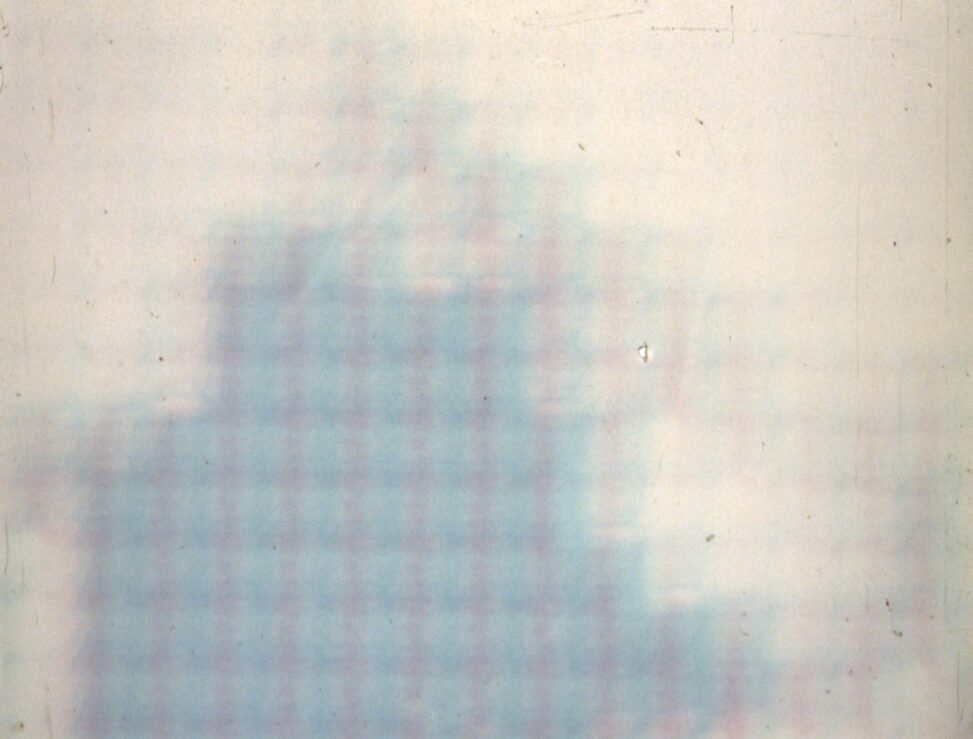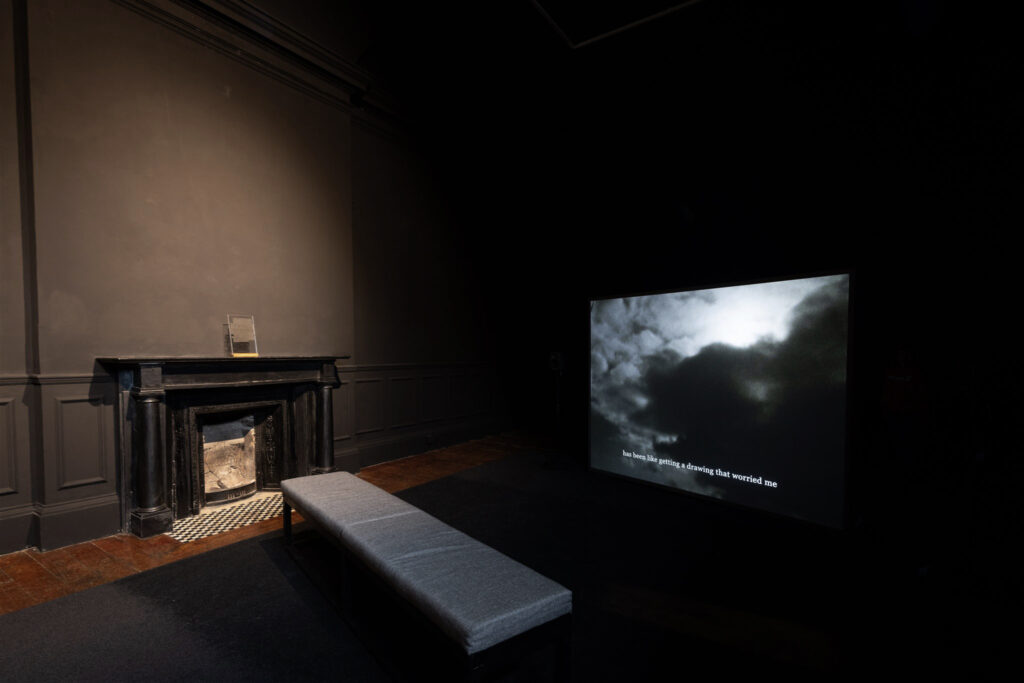
Digital file from 16mm cameraless and super8 camera footage, b&w & colour, sound, 20min., 2025.
voice: Eric Swartz
music: Katie Gerardine O’Neill
camera, processing, editing: Helena Gouveia Monteiro
voice mix: Filipe Paes
Project supported by Sirius Arts Centre Cobh, Baltic Analog Lab Experimental Film School 2023, and L’Abominable-Navire Argo.
Screenings:
ends meet solo exhibition at Sirius Arts Centre Cobh, March 15th-April 26th 2025 http://www.siriusartscentre.ie/visual-art/helena-gouveia-monteiro-ends-meet
ends meet is an experimental film about clouds, represented within an impossible object, simultaneously analog and digital, still and moving.
Two photographs of cloudy skies were transferred onto 16mm colour film through a darkroom process allowing for direct printing of digital images onto photo-chemical film, preserving and bringing forth the unique characteristics of both materials. Each frame includes a small portion (around 47 pixels) of the original still image, and each horizontal line of this image becomes an animated sequence in the film.
The soundtrack is composed of excerpts from the intimate letters of Alfred Stieglitz and Georgia O’Keefe, sent between 1916 and 1929. In a style fluctuating between mundane and lyrical, the two artists provide lengthy descriptions of the weather conditions in various locations in the United States, depicting changing light and colour in great detail. The choice of this material relates to the iconic series Equivalents (1925-1934), and to the place of affect and personal ambiguity within the constructed aura of abstract or formal modernist works.

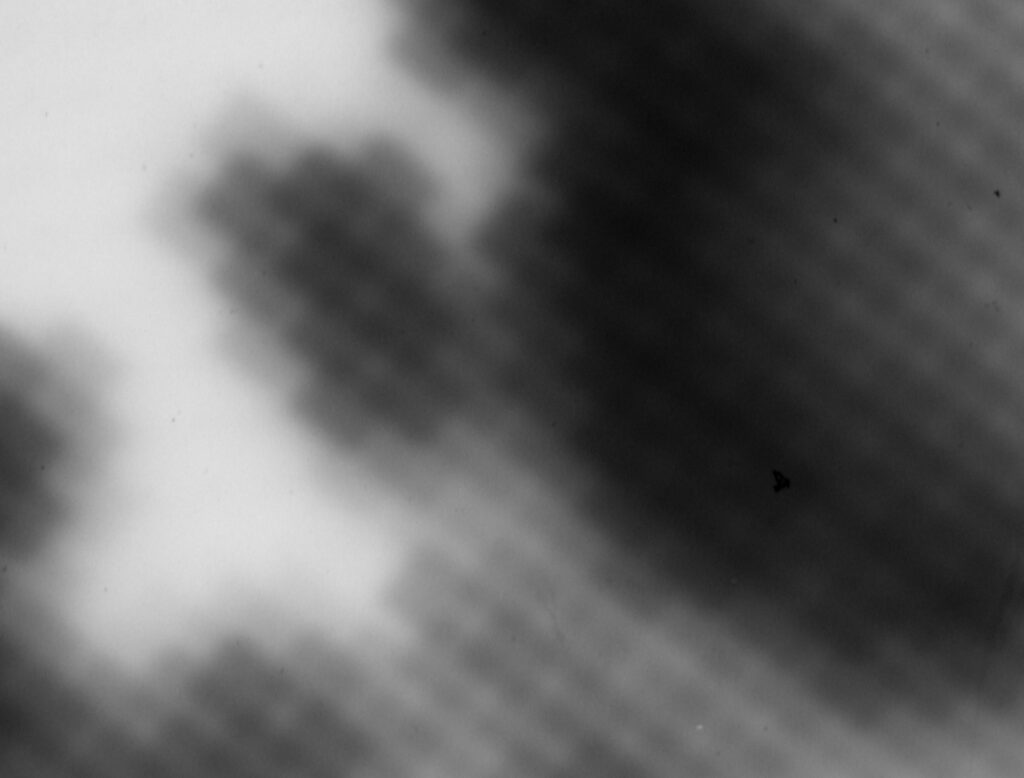
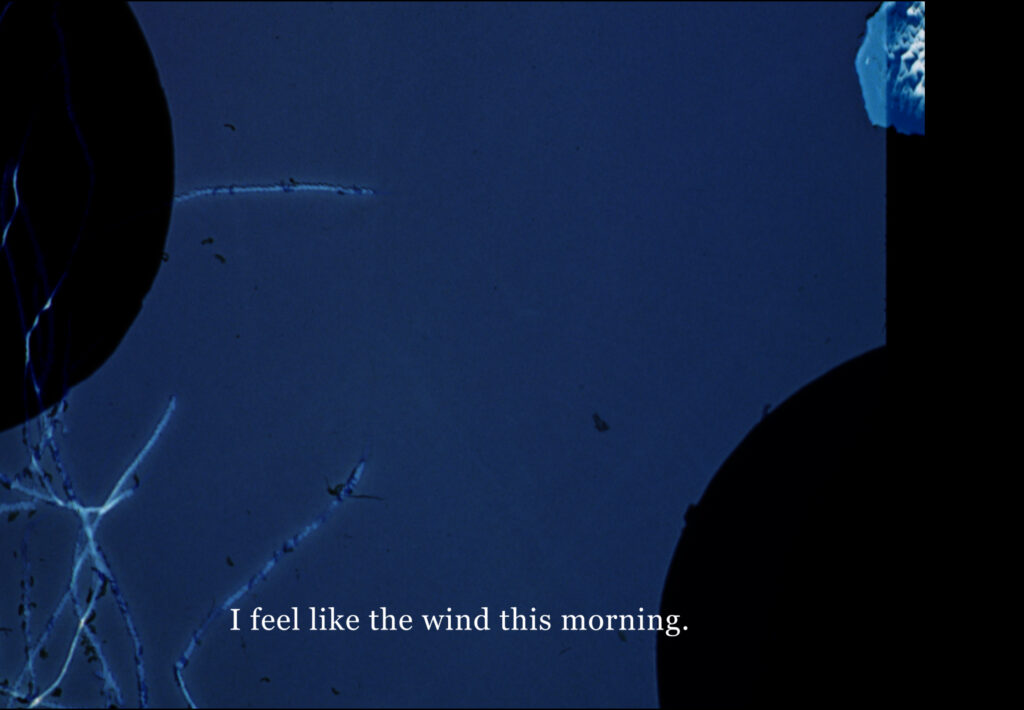
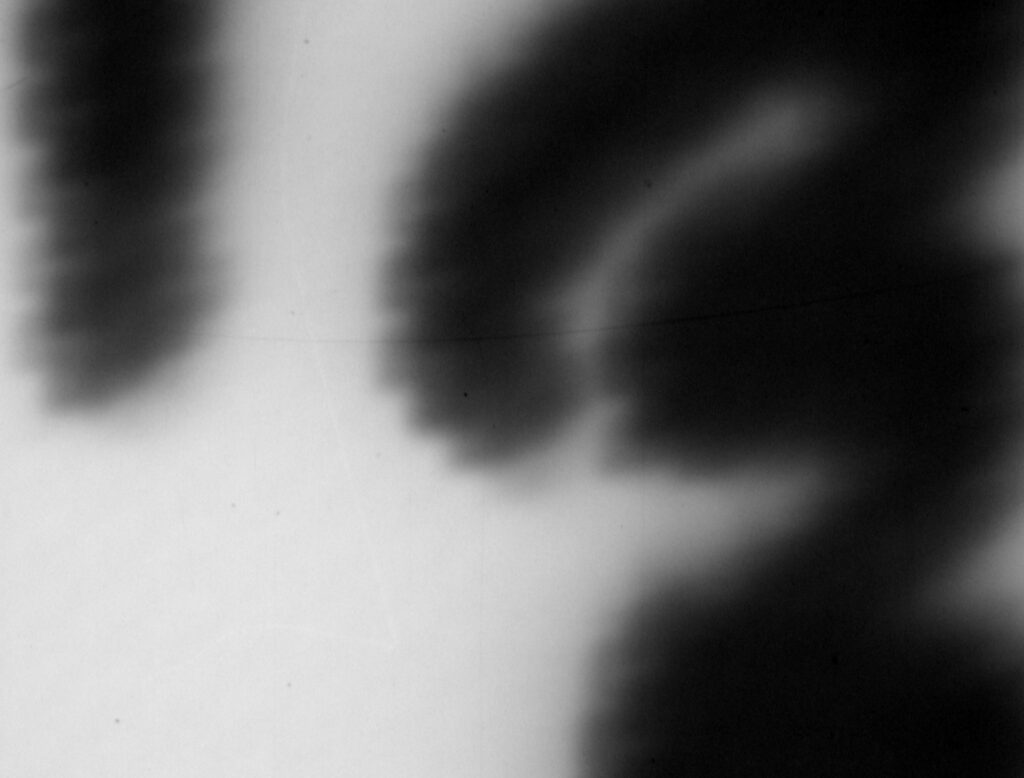
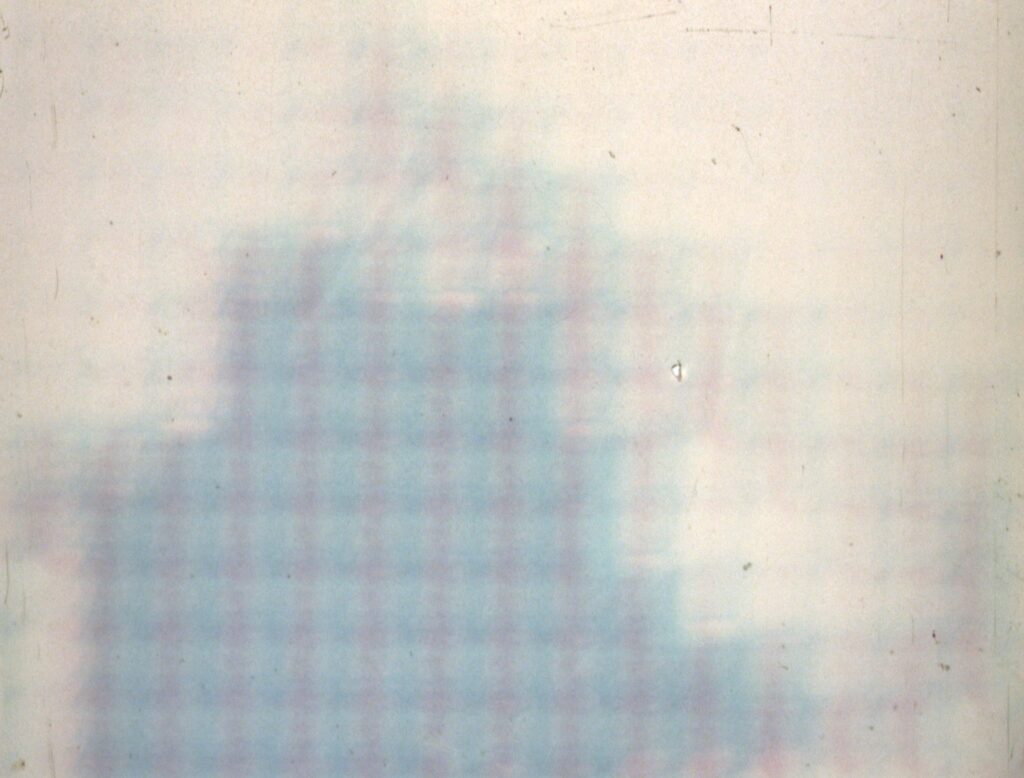
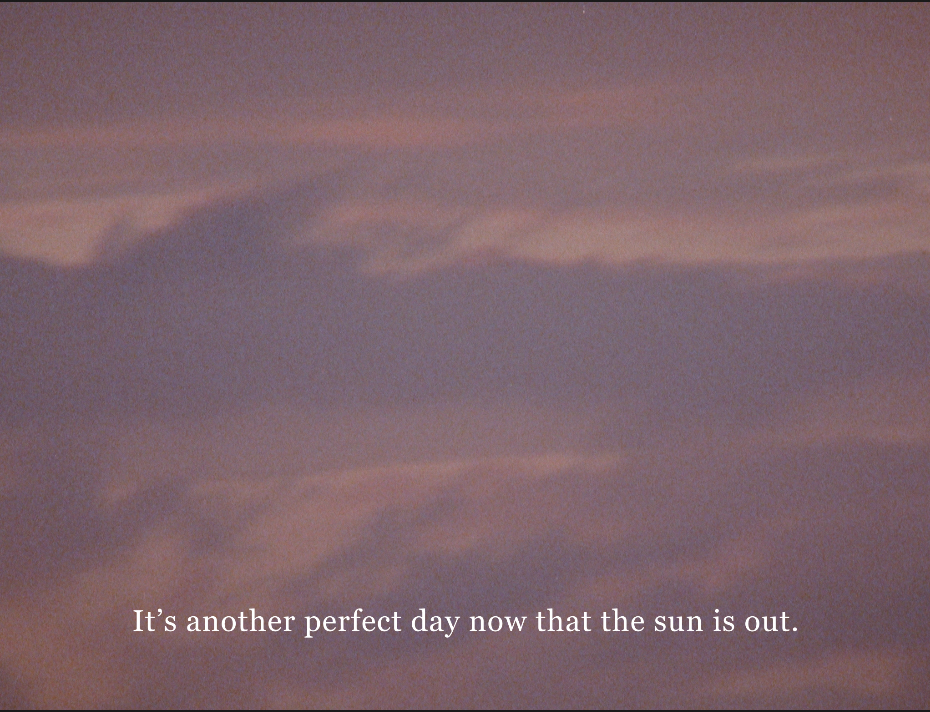
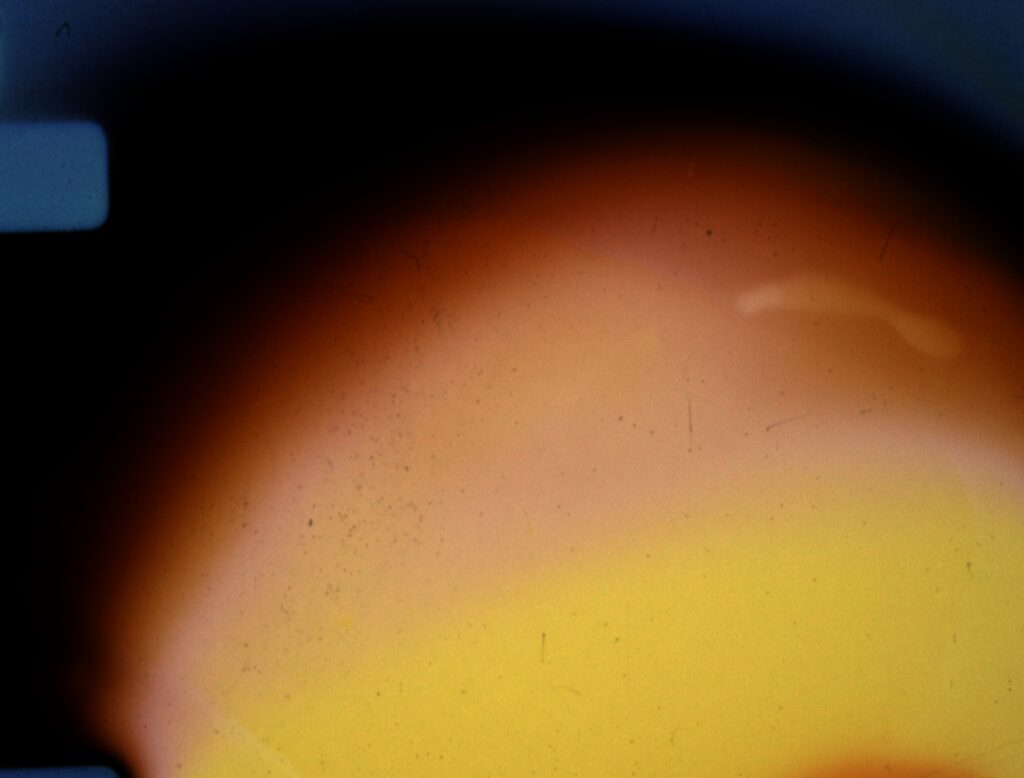
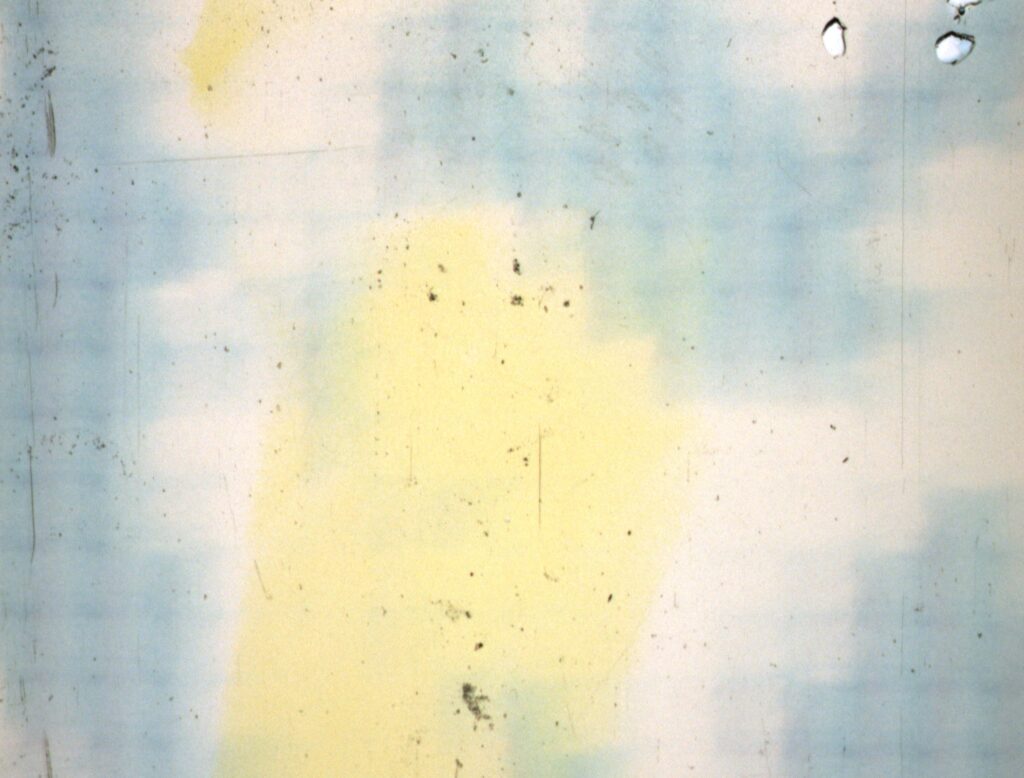

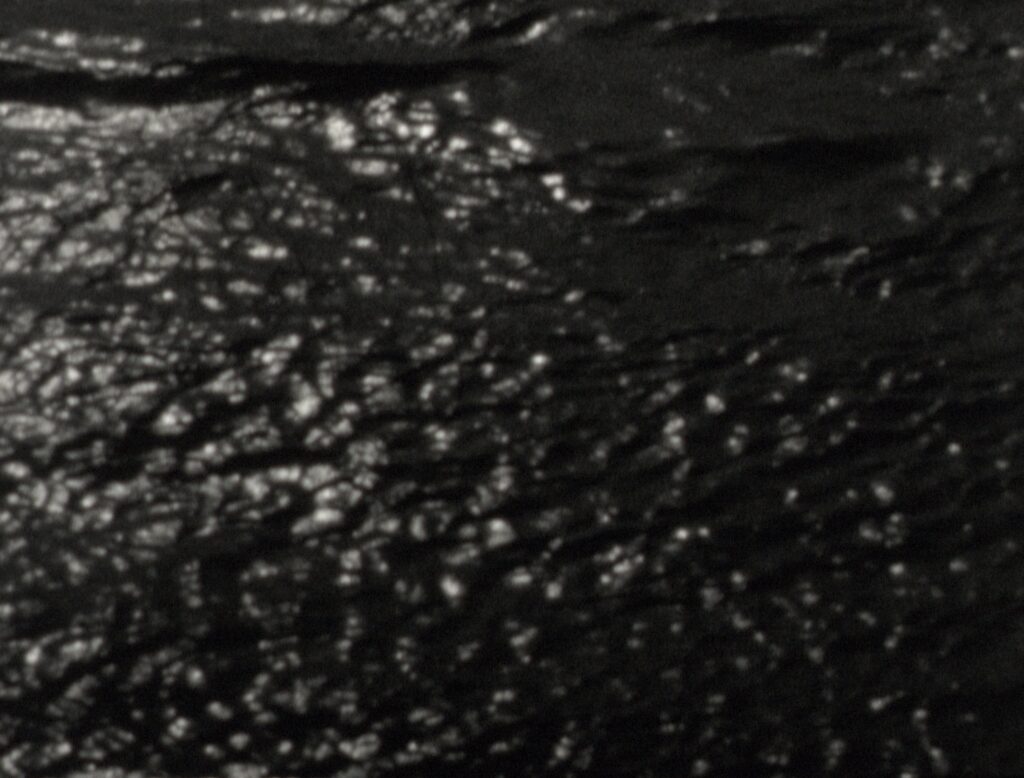

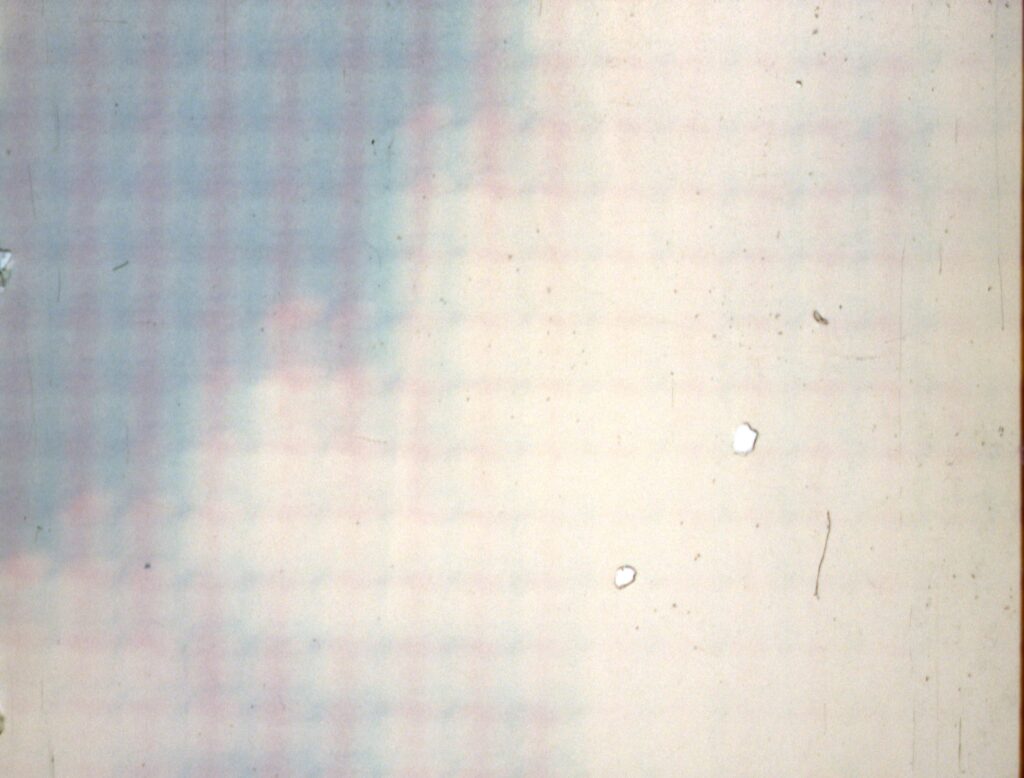
“For Stieglitz, The Steerage is a highly valued illustration of this autobiography. More than an illustration, it is an embodiment; that is, the photograph is imagined to contain the autobiography. The photograph is invested with a complex metonymic power, a power that transcends the perceptual and passes into the realm of affect. The photograph is believed to encode the totality of an experience, to stand as a phenomenological equivalent of Stieglitz-being-in-that-place. And yet this metonymy is so attenuated that it passes into metaphor. That is to say, Stieglitz’s reductivist compulsion is so extreme, his faith in the power of the image so intense, that he denies the iconic level of the image and makes his claim for meaning at the level of abstraction.” (in Photography Against the Grain, A. Sekula, 1984).
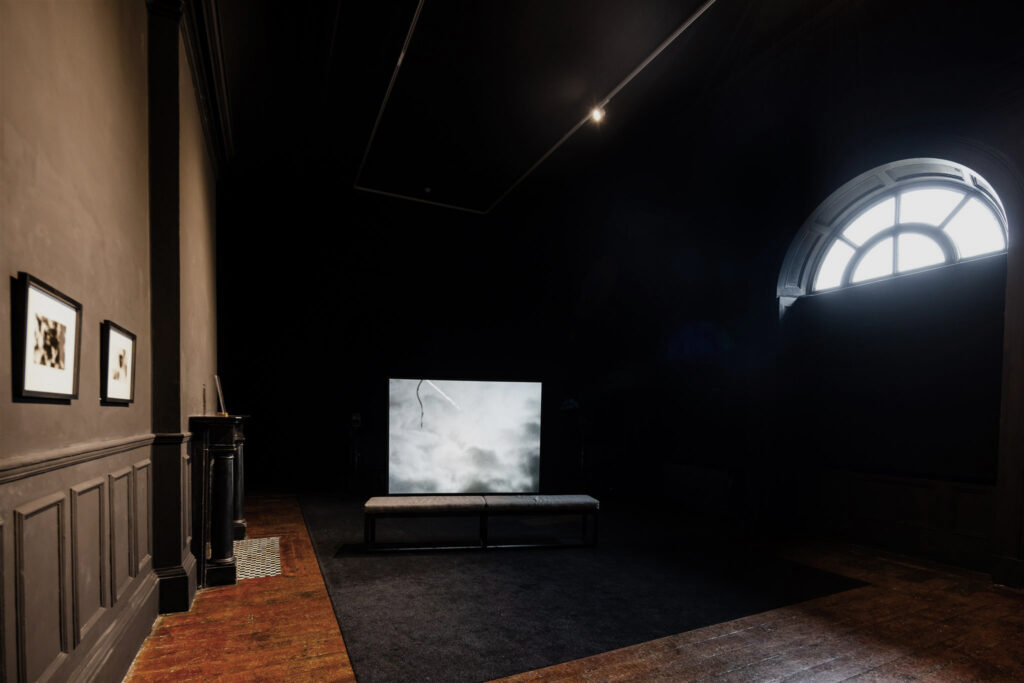


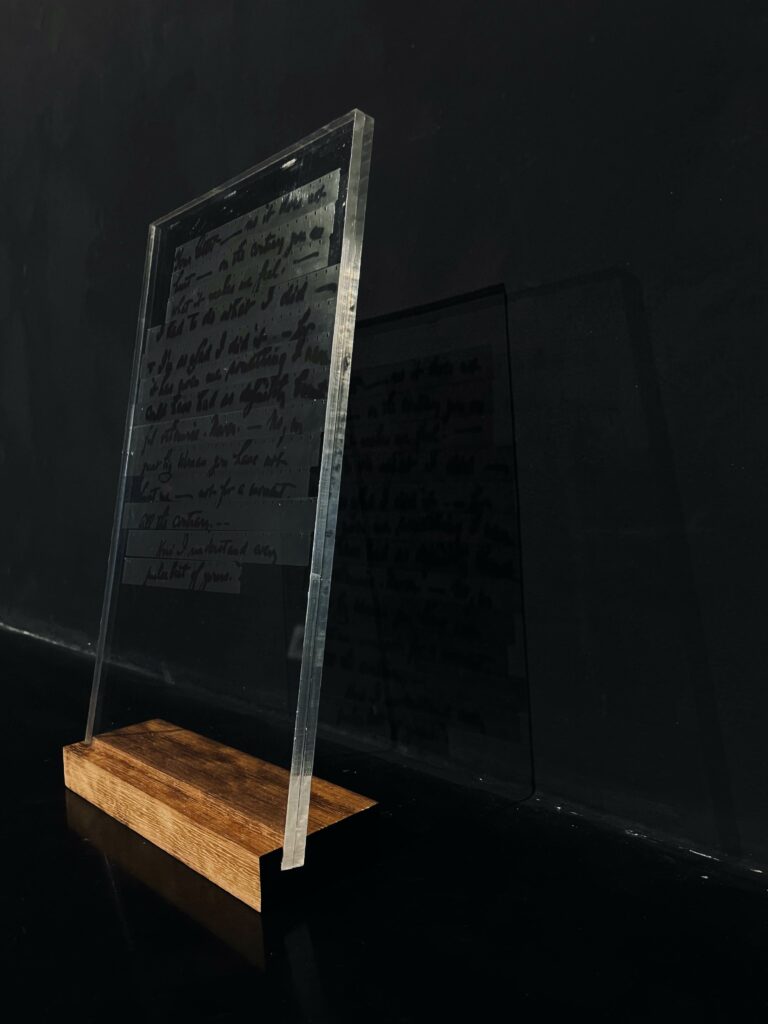
“Helena Gouveia Monteiro is a Portuguese artist based in Dublin whose practice spans film, photography, installation, and publications. In her image making, she explores both technical and theoretical approaches, referencing the history of experimental cinema and media archaeology; she is more interested in the physical properties of film than in the medium’s ‘representational’ capacities. Her work examines how images produced by apparatuses and processes, whether lens-based or otherwise, shape our visual culture.
The exhibition ends meet brings a newly made, commissioned film of the same title together with a set of five photographs titled Equivalents (2015). Both depict cloud formations in an almost abstract manner, and cite the work of artists Georgia O’Keeffe (1887–1986), known for her enduring interest in natural forms, and Alfred Stieglitz (1864–1946), who initiated a photographic series of his own titled Equivalents in the early 1920s. Monteiro follows their ideas of detaching subject matter from literal interpretation, but by introducing a private and fragile emotional sphere, she contradicts the modernist myth of artistic genius that Stieglitz, in particular, aspired to epitomise.
Monteiro began ends meet with two photographs she shot with a digital camera. She then exposed strips of film to the light of a computer screen and/or video projector and ‘printed’ small portions (around 47 pixels) of the original photographs onto each of their frames. By transferring the digital photographs onto film strips through a darkroom process allowing for direct contact between the digital source and the analogue receptacle, she preserved and brought forth the unique characteristics of both elements.
ends meet features a long succession of textured, flickering, ‘chemical-looking’ imagery that blends a wide spectrum of solid colours with ethereal views of cloudy skies in black and white. The voice-over is composed of excerpts from intimate letters that O’Keeffe and Stieglitz exchanged between 1916 and 1929. In a flat monotone, the narrator reads from their lyrical descriptions of the weather, which often expand outward from reflections on atmospheric conditions to ruminations on their relationship and their shared adventures in fabricating meaning through images. Each segment begins with the letter’s location and date as a kind of geographical and temporal marker.
Some sections of ends meet include footage captured by Monteiro while undertaking a residency at Sirius Arts Centre, housed in a building facing Cork Harbour and an entry point to the Atlantic Ocean. At one moment a freighter slowly passes by, framed by a window; at others, the ethereal cloudy skies typical of Irish meteorological conditions are enhanced by the expansive water reflections that characterise the site. The letters’ occasional mentions of locales in the United States merge these different realities under one airspace, dissolving any specific sense of place and contributing to an overall dreamlike ambience.
ends meet is a poetic undertaking that is both meditative and searching. The title suggests the simultaneous connection and distance between O’Keeffe and Stieglitz, both concrete – they lived apart from each other – and psychological. More metaphorically, it also evokes the association – historical, intellectual and material – between analogue and digital imagery. The tradition of centring attention upward alludes to spirituality, while Monteiro’s scrutiny of how we interpret visual information points to questions of perception and memory, as well as how our relationship with the world is mediated by matter.”
Miguel Amado, for the exhibition ends meet at Sirius Arts Centre, 2025
